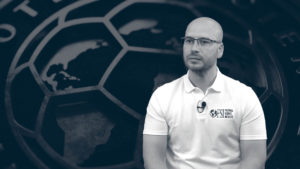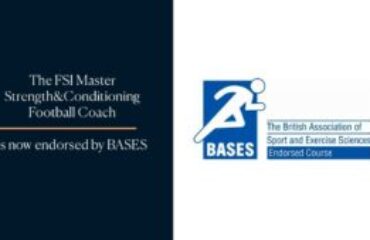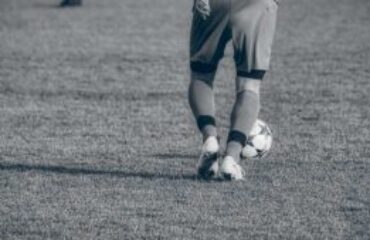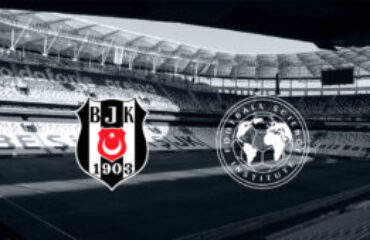1. A Goal Scoring Probability Model for Shots Based on Synchronized Positional and Event Data in Football (Soccer).
Anzer G, Bauer P.
Sportec Solutions AG, Subsidiary of the Deutsche Fußball Liga (DFL), Munich, Germany.
Due to the low scoring nature of football (soccer), shots are often used as a proxy to evaluate team and player performances. To objectively quantify the quality of any given shot this study introduces a so-called expected goals (xG) model, using an extreme gradient boosting algorithm based on hand-crafted features from synchronized positional and event data of 105, 627 shots in the German Bundesliga. With a ranked probability score (RPS) of 0.197, it is more accurate than any previously published expected goals model, allowing to assess team and player performances by process rather than results.
Front Sports Act Living. 2021 Mar 29;3:624475. doi: 10.3389/fspor.2021.624475. eCollection 2021.
2. The trunk is exploited for energy transfers of maximal instep soccer kick: A power flow study.
Carvalho DDS, Ocarino JM, Cruz AC, Barsante LD, Teixeira BG, Resende RA, Fonseca ST, Souza TR.
Movement Analysis Laboratory, Universidade Federal de Minas Gerais, Belo Horizonte, Minas Gerais, Brazil.
18 adult male amateur soccer players were assessed for 3-D kinematics and ground reaction forces in an instep kick. The total mechanical energy expenditure (TMEE) was substantial at the trunk, that generates downward energy flows from the upper to the lower trunk and from the lower trunk to the pelvis, and then to the lower limb, sequentially, which favors angular motions for ball contact. There is a formation and release of a tension arc only at the hip joint, and deceleration of the segments slightly sooner than ball contact.
J Biomech. 2021 Apr 9;121:110425. doi: 10.1016/j.jbiomech.2021.110425. Online ahead of print.
3. Do hip and groin muscle strength and symptoms change throughout a football season in professional male football players? A prospective cohort study with repeated measures.
van Klij P, Langhout R, van Beijsterveldt AMC, Stubbe JH, Weir A, Agricola R, Fokker Y, Mosler AB, Waarsing JH, Verhaar J, Tak I.
Department of Orthopaedic Surgery, Erasmus MC, University Medical Center, The Netherlands.
This study analyzing data of 217 professional male football players in 11 Dutch clubs, reports Hip muscle strength (hand-held dynamometer) values of Adduction/Abduction strength around 3.40 N.m with a ratio around 1.00, with dominant legs having higher abduction strength (p<0.001) and lower adduction/abduction ratio (p<0.001). The self-reported hip and groin function (Hip And Groin Outcome Score (HAGOS)) was lower in players with previous injuries. Both hip muscle strength and HAGOS-scores remained relatively stable throughout the season.
4. Biomechanical but Not Strength or Performance Measures Differentiate Male Athletes Who Experience ACL Reinjury on Return to Level 1 Sports.
King E, Richter C, Daniels KAJ, Franklyn-Miller A, Falvey E, Myer GD, Jackson M, Moran R, Strike S.
Sports Medicine Research Department, Sports Surgery Clinic, Dublin, Ireland.
This study in a large cohort of 1045 male athletes playing level 1 sports (ie, multidirectional field sports that involve landing, pivoting, or CoD) tested 9 months after primary ACL reconstruction (ACLR), found no differences in strength and performance (jump and CoD) measures on the ACLR side or in symmetry, and no differences in these parameters between those who reinjured the reconstructed ACL (RI group) and those with no reinjury after 2 years of follow-up. Conversely, biomechanical analysis indicated differences on the ACLR side primarily in the sagittal plane for the double-leg drop jump (effect size, 0.59-0.64) and in the frontal plane during unplanned CoD (effect size, 0.61-0.69) in the RI group, with these biomechanical variables demonstrating limited ability (area under the curve, 0.67 and 0.75, respectively) to prospectively predict ACL reinjury. This implies that targeting these biomechanical variables during rehabilitation may reduce reinjury risk in male athletes returning to level 1 sports after ACLR.
Am J Sports Med. 2021 Mar;49(4):918-927. doi: 10.1177/0363546520988018.





